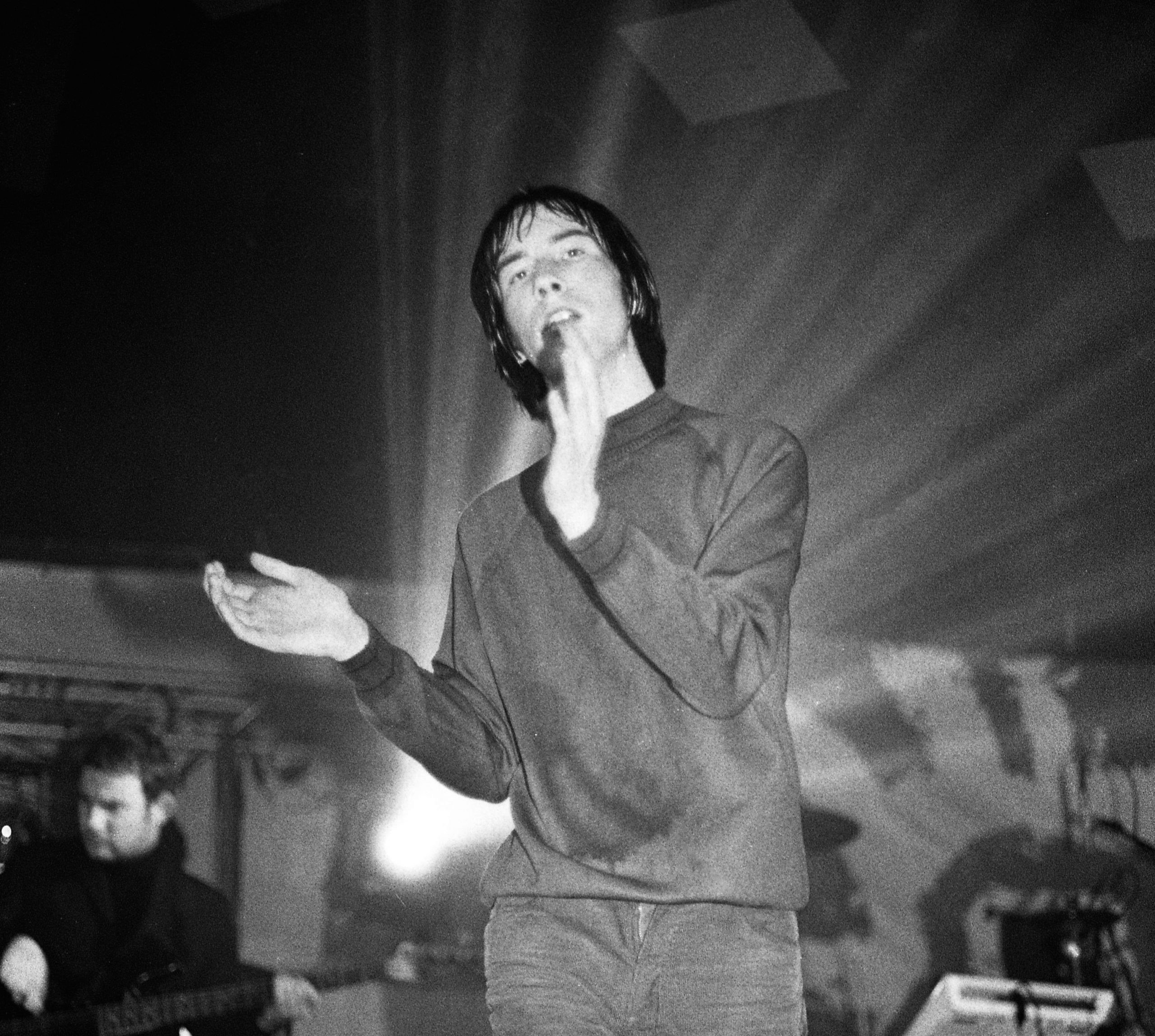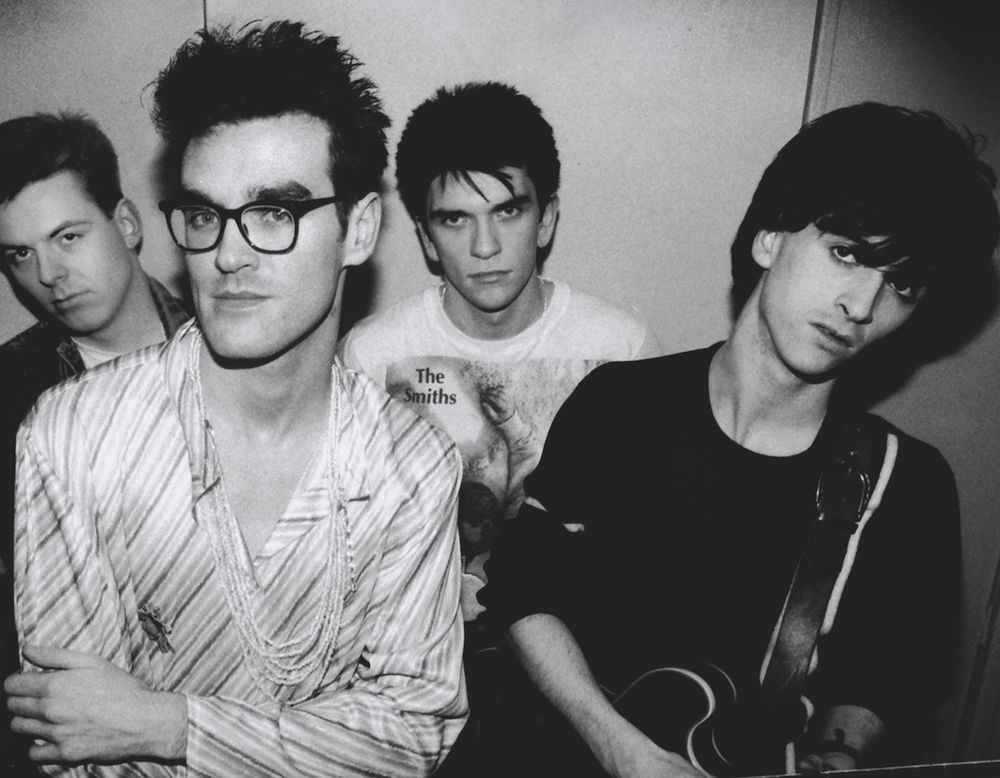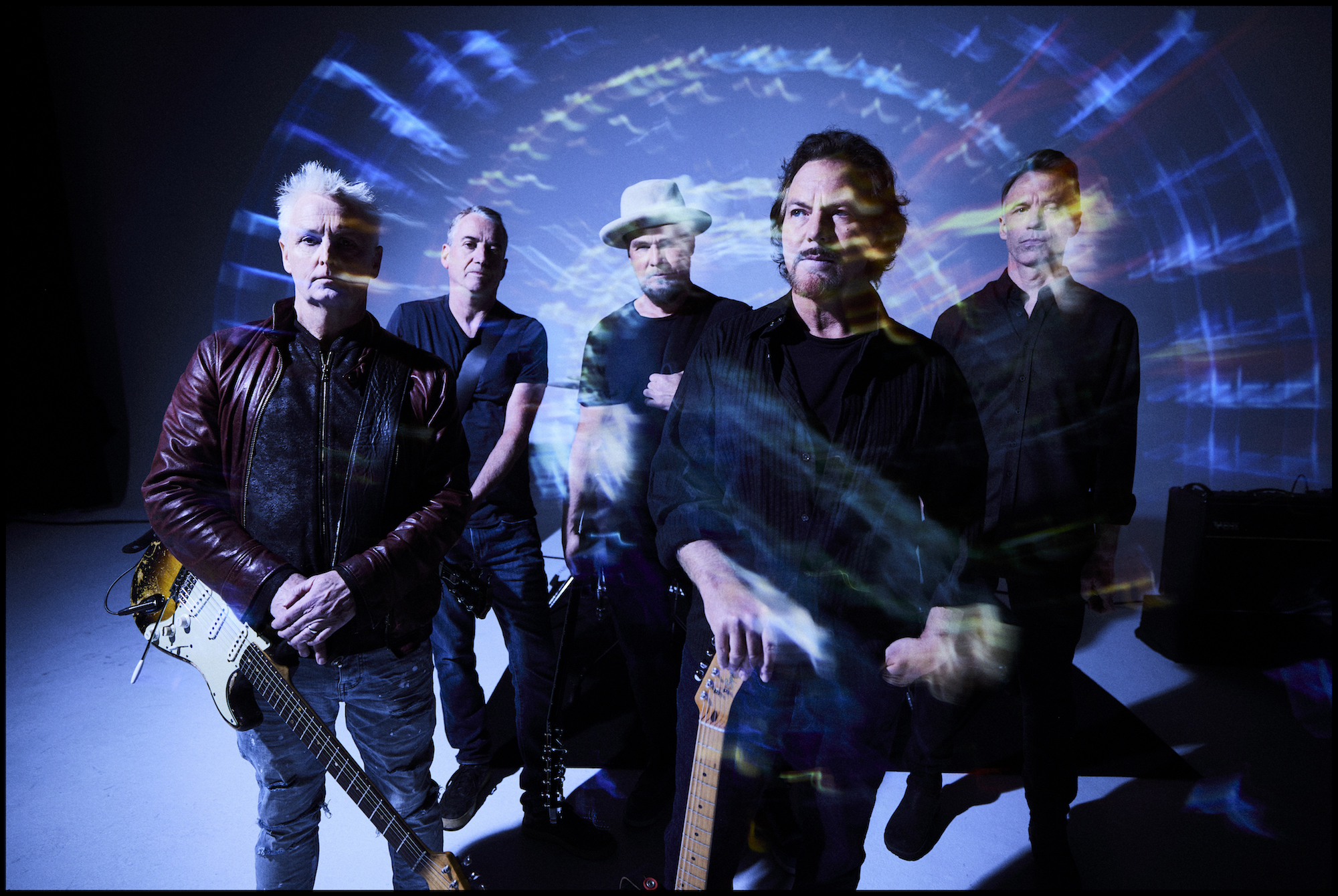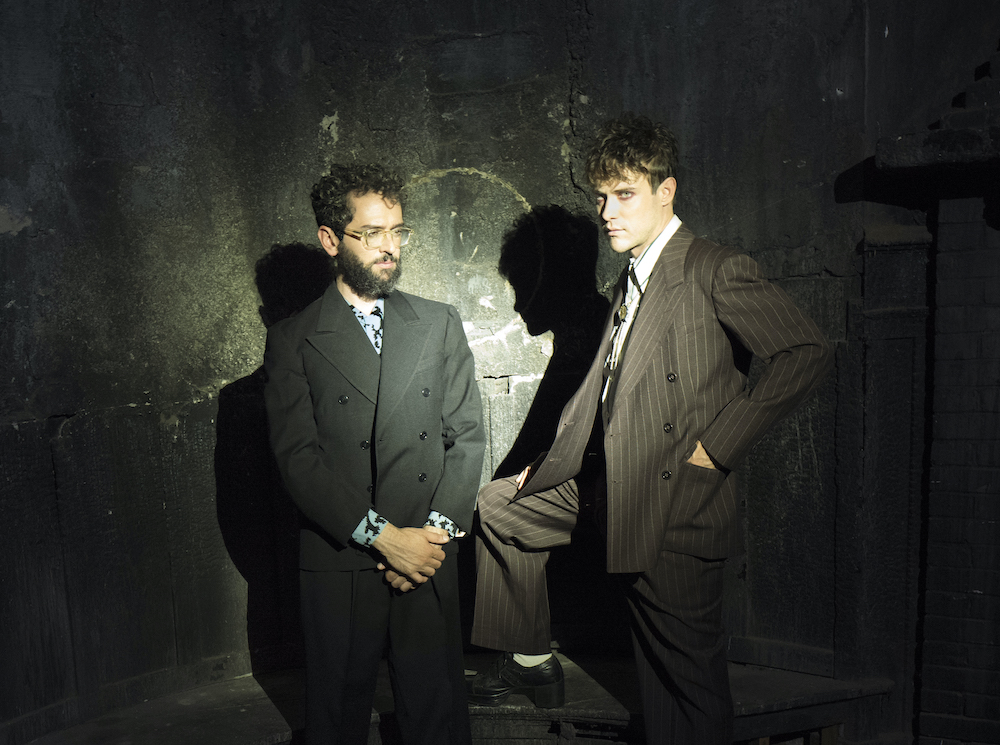Throughout their 30+ years as a band, Glasgow’s Primal Scream have always operated on the preternatural need to be in flux; a creature poised on the promise of evolution. This instinct is all at once their Kryptonite and greatest asset. They’ve jumped from reverb-laden guitar (Sonic Flower Groove) to sprawling soundscapes (Vanishing Point) to near-Stones mimicking (Give Out But Don’t Give Up), all to varying degrees of success. Even on their new album, Chaosmosis, Primal Scream collaborate with contemporary luminaries like Sky Ferreira and HAIM -- their latest stint in the constant pursuit to reconsider, reshape, and revise their understanding of sound, and in turn, themselves.
Despite their sonic swerves, Primal Scream have always been guided by the vision of charismatic, wild-haired frontman Bobby Gillespie since their inception in the early 1980s. Gillespie and bandmate Jim Beattie (a school friend with whom Gillespie founded Primal Scream) both grew up in the Glasgow suburb of Mount Florida. After being throttled by punk rock, and fed up with the grim political climate in Thatcher-era U.K., the two were desperate to get out and create. So they started making primitive noise music, with Gillespie helming two trashcan lids and Beattie noodling on a effects-driven guitar as they covered the likes of the Byrds’ “Mr. Tambourine Man” and the Velvet Underground’s “Heroin.”
A natural performer, Gillespie was well-suited (and well-dressed) to front Primal Scream instead of drumming, which he’d been doing for his friends the Jesus And Mary Chain during the Psychocandy era. He had to choose between the two acts, and ultimately went with the Scream (though he’s still friends with the Mary Chain). Since releasing their first album in 1987, Primal Scream have gone on to score films, collaborate with the likes of Robert Plant and Kevin Shields, and rigorously toured the world to promote their diverse slew of records. Chaosmosis, their first effort since 2013’s More Light and their 11th album to date, sees the band continuing to play with form. Yet the mission has always been the same: In their words, “Don’t fight it, feel it.”
10. “Some Velvet Morning” (Lee Hazlewood And Nancy Sinatra Cover) (from Evil Heat, 2002)
Lee Hazlewood and Nancy Sinatra’s psychedelic classic has been covered every way imaginable, and is still being used to soundtrack surreal moments in shows like Mr. Robot. But Primal Scream’s take on the classic '60s psych-pop song is distinctive, even in a world where an entrancing Slowdive cover also exists. Not only is it because Gillespie (a Hazlewood superfan) duets the song with a whispering Kate Moss in their revival of Hazlewood and Sinatra. Nor is it solely due to the fact that My Bloody Valentine’s Kevin Shields lent his distinctive guitar chops to the track (and produced more than half of Evil Heat). The imaginative electronic reworking of the song is what’s so unusual about it, and keeps us coming back. For some, the vastly altered approach might render the song almost indistinguishable from the original plucky orchestral track, but the band’s love for the alluring tale of Phaedra remains intact.
[videoembed size="full_width" alignment="center"][/videoembed]
9. “How Does It Feel To Belong” (from the Star EP, 1997)
Released in the summer of 1997, Primal Scream’s Star EP is a slower, sadder work that verbalizes everything that’s not spoken on Vanishing Point, the mostly instrumental album the band would put out less than a month later. On this EP, the band shed any semblance of toughness and showed the vulnerable side of stardom, musing on higher powers (“Jesus”) and the strange camaraderie that depression can breed on “How Does it Feel To Belong.” Here Primal Scream get the bluesy licks right, allowing them to gradually crescendo into a swaying ballad. Misery loves company, after all.
[videoembed size="full_width" alignment="center"][/videoembed]
8. “Shoot Speed/Kill Light” (from XTRMNTR, 2000)
The hypnotic, Chemical Brothers-produced “Shoot Speed/Kill Light” is a highlight from XTRMNTR, Primal Scream’s most radical and decidedly political album. Gillespie grew up loving the likes of anarchist-bent punks such as the Sex Pistols, and that sensibility is evident on XTRMNTR tracks like “Swastika Eyes.” Around its release, Gillespie told Paper: "The next time you see a photo of Madeleine Albright, look in 'er eyes. She's got swastika eyes! And not just her, anyone in a position of power who -- whatever else they're saying -- is really just working on behalf of multinational corporations." While “Shoot Speed/Kill Light” doesn't have the same activist message, the mantra-esque hum keeps the album’s furious momentum going, which is only enhanced by Bernard Sumner of New Order's guitar playing. The revolution may not be televised, but it will be danceable if Primal Scream’s got anything to do with it.
[videoembed size="full_width" alignment="center"][/videoembed]
7. “Gentle Tuesday” (from Sonic Flower Groove, 1987)
Call me swoony, but I love me some early, noise-pop-heavy Primal Scream. Around the time of Sonic Flower Groove's release, Gillespie and his contemporaries in Glasgow -- including local bands and art students in Strawberry Switchblade, the Pastels, and the Soup Dragons -- were reveling at a short-lived but massively influential party called A Splash One Happening. Celebrating psychedelic pop music, punk rock, and avant-garde film, Splash One (which existed for all of about a year, from '85 to '86) was a place where like-minded weirdos converged to dance all night, with tapes and zines in tow. When Eve Dawoud -- of the style history project What We Wore -- reflected on Splash One for Dazed, she said the following: "It was a varied crowd, united by an overarching punk-ness; bound together by energy and ‘otherness,’ despite what they are wearing. Imagine, in the light of day, their dark looks contrasting against the sandstone tenements of the city.”
Released shortly after Splash One's final days, the Scream’s first album -- the paisley-printed Sonic Flower Groove -- sounds like a love letter to those nights (on the cover, Gillespie’s even wearing the Splash One uniform of Velvet Underground-esque leathers). Joined this time by his friend Andrew Innes on rhythm guitar, Gillespie sounds like he’s perpetually in love on the lilting “Gentle Tuesday,” which features swelling guitars, sugar-coated riffs, and jangly tambourines reverberating everywhere. The song is dedicated to anyone who’s held tight to a summer romance, those “memories as fat as bees.” And while Sonic Flower Groove is not Primal Scream’s headiest album by any means, it’s often cited as a precursor to the Stone Roses’ classic self-titled debut album.
[videoembed size="full_width" alignment="center"][/videoembed]
6. “Tenement Kid” (from More Light, 2013)
2013’s More Light was a strong return to form for Primal Scream after two relatively sub-par releases (2006's Riot City Blues and 2008's Beautiful Future), melding their Krautrock, electronic, and pop sensibilities into a kaleidoscopic affair (and it features the best album art in the band’s career). Gillespie grew up in tenements in suburban Scotland, and when I interviewed him for the Psychocandy 33 1/3 book (out in October), he told me that he felt slighted and “angry” by the bleakness of the political landscape around him. It’s not difficult to imagine that he might be speaking to his former self in the spectacular “Tenement Kid,” featuring lyrics such as, “Slum education, tenement kid/ He knew the score, kept it well hid/ Mother was damaged, father was too/ Handed down the generations/ Inheritance blues.” At their best, Primal Scream grapple with past struggle using the resources of the present, and “Tenement Kid" is a perfect example of that. The song exemplifies their desire to make art that reflects today’s extreme times, as Gillespie previously told Stereogum in 2013: “It seems we’re getting a little conservative and nobody’s got anything to say. I don’t mean that in that more people are right-wing or anything, but it seems that everything’s a bit too safe and there’s no confrontational performance out there at the moment.”
[videoembed size="full_width" alignment="center"][/videoembed]
5. “Trainspotting” (from Vanishing Point, 1997)
“Trainspotting” shows how Primal Scream can flex their instrumental scoring chops (hell, they might want to think about doing it more often). The band wound up scoring a song for Danny Boyle’s heroin-soaked adaptation of Irvine Welsh’s eponymous novel because they had been fortuitously interviewed by Welsh for i-D during the Give Out But Don’t Give Up era a few years earlier. As Gillespie recently recounted to SPIN: The band hit it off with Welsh, whom Gillespie remembers as a fellow punk and Scotsman. And when the band heard that a soundtrack was being assembled featuring the likes of Blur and Pulp for the soundtrack, Primal Scream thought: “Wait a minute, man, we’re the junkie fucking band! And we’re working class!” Primal Scream reached out to Welsh directly and gave him a track they’d done with their DJ friend Andrew Weatherall, which eventually made it into the 1996 film. The instrumental “Trainspotting” seamlessly merged into the following year’s experimental Vanishing Point. The song aptly captures the sound of city slickers stalking alleys in their trainers and starting trouble, with a phone ringing somewhere in the distance. But it’s also a dense, textured track that isn’t afraid to show its teeth.
[videoembed size="full_width" alignment="center"][/videoembed]
4. “Movin’ On Up” (from Screamadelica, 1990)
During the Screamadelica era, the guys of Primal Scream were listening to Curtis Mayfield’s Superfly on repeat. So it’s no surprise that influence bled onto what would become their most important album, and Mayfield's presence is particularly felt on “Movin’ On Up.” To this day it’s Primal Scream’s most popular song, and it’s not hard to see why: The hymn is a triumphant number led by gospel-steeped vocals, twangy piano, and a steady drum beat. Primal Scream’s lyrics often plumb the depths, but “Movin’ On Up” is the prime example of the band's joyous side. This optimism, and willingness to experiment with burgeoning rave and dub movements, is part of what made Screamadelica so unforgettable, and still makes it one of the early-'90s best albums.
[videoembed size="full_width" alignment="center"][/videoembed]
3. “Get Duffy” (from Vanishing Point, 1997)
By the late '90s, Primal Scream had all but shed their bluesy rock 'n' roll allegiances that had permeated 1994's rollicking Give Out But Don’t Give Up. They unveiled the one-two punch of Vanishing Point and XTRMNTR, two efforts that dove into the realm where dub and dance met in a manic mating call. The first, Vanishing Point, saw Primal Scream plunging into more improvisation and a bevy of instrumental tracks: a risk that paid off. The revolving cast of musicians brought some of Gillespie’s heroes, including the Sex Pistols’ Glen Matlock on bass and Motörhead’s Lemmy Kilmister as a composer, as guests on the album. And together, they were able to create something that sounded truly new, even for the consistently groundbreaking Primal Scream. The twinkling “Get Duffy” especially shines with brass, horns, and nerves. It’s the perfect atmospheric head trip for a night on the dance floor.
[videoembed size="full_width" alignment="center"][/videoembed]
2. “Velocity Girl” (from the “Crystal Crescent/Velocity Girl” single, 1986)
Before they plunged into forging formative acid-house-meets-indie, Primal Scream got their kicks making crystalline noise pop, which they mastered on the sickly sweet “Velocity Girl.” The B-side to “Crystal Crescent,” their second single “Velocity Girl” is as short as a sugar high and just as sweet. The song is both a nod to Gillespie’s love of Beatles-era pop (the song’s first line is “Here she comes again”) and a testament to where he was in life at the time: playing both in Primal Scream and crashing noise and pop with Scottish mainstays the Jesus and Mary Chain. In 1986 Primal Scream were still embryonic; they’d only written “All Fall Down” and “Crystal Crescent/Velocity Girl.” But “Velocity Girl,” which doesn’t even clock in at a minute and a half, sure made an impact. It would not only be covered by the likes of Manic Street Preachers in the years following its 1986 release, but it also kicked off NME’s now-legendary C86 Tape.
[videoembed size="full_width" alignment="center"][/videoembed]
1. “Loaded” (from Screamadelica, 1990)
Screamadelica, Primal Scream’s third album and often cited as their best, transformed the band from Byrds fanboys into a pioneering force who melded rock with acid house and electronica. After the modest sales of Sonic Flower Groove, the band did two things in the late 1980s that would prove to be game-changing: They punkified their songs and began frequenting decadent rave clubs in London, such as Shoom. They befriended DJ Andy Weatherall, a staple at Shoom, who was a fan. Famously, Primal Scream guitarist Andrew Innes slipped Weatherall a demo of a new track they’d been working on, “I’m Losing More Than I’ll Ever Have.” What Weatherall did would change Primal Scream’s entire trajectory: He cut the track with Peter Fonda’s iconic diatribe from The Wild Angels, in which he says he wants to get “loaded” and “have a good time,” along with a groovy beat cribbed from a bootleg of Edie Brickell's track "What I Am.” That mash-up evolved into “Loaded,” the first anthemic single from Screamadelica, which became Primal Scream's first verifiable hit. The sample-heavy groove still holds up as Primal Scream’s best, and it sounds best blasting from an convertible with the top down, preferably never taking your foot off the gas.
[videoembed size="full_width" alignment="center"][/videoembed]






